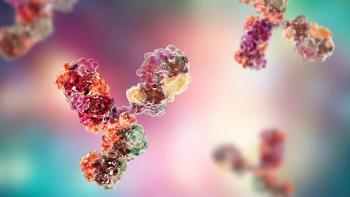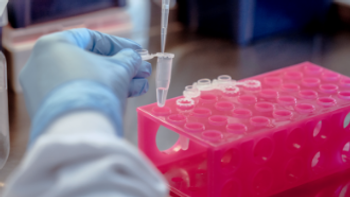
- BioPharm International-05-01-2017
- Volume 30
- Issue 5
New Directions in Bioreactor Design
Improving the bioreactor growth environment increases the rigor of bioprocessing runs.
The bioreactor is a standard device in processing streams, and could be considered the workhorse of a bioprocessing train. Thus, ongoing research seeks to explore how to optimize their performance, with studies that focus on bioreactor modeling, feed schedule manipulation, designing tanks and impellers to support specific cell types, and efforts to switch fed-batch bioreactors to continuous modes. Also important is a bioreactor’s ability to produce proteins at a consistent level, with reproducible levels of product from run to run. BioPharm International spoke to Ken Clapp, product manager in the bioreactor division at GE Healthcare Life Sciences; Peter Levison, PhD, senior marketing director of downstream processing at Pall Life Sciences; and Joe Capone, global product manager at Pall Life Sciences, to find out more about how engineers are optimizing the capabilities of bioreactors.
Multifeed processing
BioPharm: How could multifeed processing improve reactor productivity?
Clapp (GE Healthcare Life Sciences): Providing and controlling feeds necessary for optimal cellular metabolism would certainly improve bioreactor productivity. Keep in mind, a cell-culture bioreactor, regardless of physical design, instrumentation, and control system, acts as a substitute for the originating whole organism.
In the organism, productivity is a matter for staying healthy and alive; [cell health is characterized by the] adequate availability of nutrients and minimal exposure to waste with no physical damage. Commercially available bioreactors are used with ‘cells’ of the complex multicellular whole organism for the purposeful, preferential production of a therapeutic protein at an appropriate industrial scale. The more a bioreactor mimics the native environment, the better [it is] for the cells, and presumably, for their production of the protein of interest.
Personalized bioreactors
BioPharm: Will bioreactors be optimized to support cells specific to certain diseases?
Clapp (GE Healthcare Life Sciences): Alternates to stirred-tank bioreactors have been under investigation for decades. Under the current paradigm, large-scale industrial bioreactors are used to produce proteins for the treatment of disease; the one-to-many approach.
In the future, will we see practical implementation of the one-to-one approach, in which each patient has or is the bioreactor? Yes, to a certain extent. Perhaps I see this question posed an alternate way: Will bioreactors emerge that are optimized to support specific cell types? There are many bioreactor designs in existence, from very simple to complex. Some are scalable, some are not. Some are commercially viable, others not. Research is ongoing for established designs as well as for new designs, with the intention to improve the growth environment for better, more specific productivity.
Fluid dynamics is a focus area, as chemical and physical cellular stresses can have catastrophic results. The productivity in terms of protein titer we see today was unheard of not so many years ago.
If the future of personalized therapies involves bioreactors tied to individual patients, then, yes, bioreactor design and optimization must occur to realize this [possibility] at the patient-disease level. The bulk of today’s therapeutic proteins are produced in stirred-tank bioreactors with adapted, industrialized cell lines.
Run reproducibility
BioPharm: How can bioreactors be best designed to ensure reproducibility between runs?
Capone (Pall Life Sciences): Equipment robustness and automation are key drivers to performance consistency. Designing bioreactors using basic systems engineering principles, including bioprocess, mechanical, production, and control engineering, can ensure robust and reliable performance (1). In addition, a big effort has to be pushed towards eliminating human intervention--[which is] still a very large cause of process variation. As such, new single-use bioreactor designs--including ergonomics to ensure easy assembly and efficient operation of the equipment, automated biocontainer inflation sequences, and protective packaging solutions--are a large step in the right direction.
Clapp (GE Healthcare Life Sciences): There are certainly variables such as cell culture media formulation, operator error, and cell heterogeneity, that are beyond the bioreactor’s design space. Of these [variables], operator error can be minimized with an appropriate amount of automation and the application of good industrial design principles that make use of intelligent user interaction concepts within the operational context.
More generally, since the bioreactor is mimicking an organismal environment, concentration gradients and mechanical stresses on cells should be reduced or eliminated. Concentration gradients cover gas exchange, nutrients, and metabolic waste products. Mechanical stresses encompass shear and impact. A bioreactor designed to foster the necessary growth environment, while not causing excessive damage in its mimicry, along with enforcing operational consistency has the best chance for reproducible runs (note: ‘reproducible’ is taken as consistent protein production).
Bioreactor modeling
BioPharm: If you had to estimate, how many manufacturing organizations actually perform bioreactor modeling experiments to drive their knowledge of their process?
Clapp (GE Healthcare Life Sciences): I would estimate that nearly all our customers are doing some level of modeling, inclusive of biological process, bioreactor, and operations (manufacturing) modeling. I see this as a prerequisite in quality-by-design (QbD) activities, process scale-up, and manufacturing optimization.
I would also suggest that the interest in continuous bioprocessing makes not only bioreactor modeling necessary, but also [requires] a broader modeling of the integrated process, such as the interdependence on upstream and downstream processes. This [approach] is imperative for a process destined for manufacturing, where reproducible, reliable protein production is required. Available computing power and modeling software tool improvements make modeling much more accessible and practical in all the areas mentioned.
Measuring cell heterogeneity
BioPharm: What are typically the tools of choice to measure cell heterogeneity inside a bioreactor?
Clapp (GE Healthcare Life Sciences): In-situ measurement, or analysis of cellular heterogeneity measurement, is not something I typically associate directly with a bioreactor, especially not large-scale, stirred-tank pilot or production bioreactors. Tools useful for heterogeneity include techniques for gene expression, RNA analysis, and other single-cell sequencing techniques; none of which have been reduced to practice in real-time, in-situ bioreactor environments. The basic presumption is that the cell population within a bioreactor is homogeneous for the purpose of producing a desired protein.
Within this population, however, variation in cells’ genomic states, their external microenvironment, as well as their intracellular chemical constituents, are known to cause variations in protein expression and function. Extending this answer to encompass the consequences of protein variability on therapeutic effectiveness would be overreaching here. Considering a homogenous population, cell density and viable cell density devices are available and used routinely with bioreactors of all types--autoclavable, in-situ sterilizable, and single-use. Viable cell density has the advantage of determining living cell concentrations over dead or dying cells, which is more relevant. These cell density devices are practical as in-situ elements of real-time, closed-loop feedback control. Knowing that cell heterogeneity gives rise to a heterogeneous protein pool, measurement of a target protein to assess, indirectly, the cells’ condition has some possibility; but [is] difficult in practice.
End-to-end continuous manufacturing
BioPharm: A truly, end-to-end continuous set-up is being investigated by numerous labs and research teams. What technology or advancement will be crucial to the seamless integration of an upstream bioreactor and downstream processes?
Levison (Pall Life Sciences): Currently fed-batch bioreactors dominate cell culture processes and these produce a bioreactor volume of harvested cell culture fluid (HCCF) from which the product is purified and formulated to give bulk drug substance (BDS). The HCCF can either be processed in batch or in a continuous manner to yield BDS, but in either case, the batch size is determined by the bioreactor volume used initially.
To move to a fully continuous state, there is a requirement to have a continuous feed of HCCF on a longer-term basis, which can then be processed on a continuous basis. To achieve this, there are two approaches that are being contemplated:
A series of fed batch bioreactors being used in parallel, expressing the same product, but harvested on consecutive days in rotation. This [method] effectively provides a continuous supply of HCCF as you cycle around from bioreactor to bioreactor.
The move to a perfusion cell culture process--which has been making a resurgence in market interest as of late-where a single bioreactor will be run for many weeks or months producing the same product. A volume of cell culture media, containing the product, is drawn off each day (typically 0.5-2 bioreactor volumes per day), which can be sent for processing to yield BDS; the bioreactor volume is continuously replenished with fresh culture media.
By integrating a perfusion process, or using multiple fed-batch bioreactors in the downstream, we start to see the reality of continuous processing come to life (2).
Clapp (GE Healthcare Life Sciences): An end-to-end, continuous set-up is broader than just aligning the bioreactor and the receiving downstream process(es); it also must include feeds like media and nutrients; it must account for the removal of excess and unwanted constituents such as cells and cellular debris. There is a basic presumption that there is sufficient knowledge about the cellular protein productivity and the choice of filtration and chromatography mediums downstream.
With that understanding, advancements in control system creation that associate two or more unit operations seems obvious. Included in the control system design would be appropriate sensors for closed-loop, feedback control of the multi-unit operation process train. Absent sensors specific to, say, a protein of interest, an indirect measurement method may suffice. In-process measurements are preferred over those that require sample removal and processing prior to value’s availability, due to measurement lag and ineffective use in real-time control.
Technological advancements in sensors, especially those able to measure critical biochemical parameters, in-process and in real-time would be essential to progress in this area. Until which time, a mixture of existing devices could be pieced together for [an end-to-end continuous] result.
References
1. A.W. Nienow et al., “Biopharmaceutical Fill and Finish: Technical and Operating Challenges for the Latest Formulations and Devices,” supplement to BioProcess Int. (November 2016).
2. K.B. Konstantinov and C.L. Cooney, “White Paper on Continuous Bioprocessing,” presentation at the International Symposium on Continuous Manufacturing of Pharmaceuticals: Implementation, Technology & Regulatory (Cambridge, MA, 2014).
Article Details
BioPharm International
Volume 30, Number 5
May 2017
Pages: 22–24
Citation
When referring to this article, please cite it as R. Hernandez, "New Directions in Bioreactor Design," BioPharm International 30 (5) 2017.
Articles in this issue
over 8 years ago
Case Study: Retrofitting Two New High Purity Water Systemsover 8 years ago
Enhancing Bioprocessing Efficiencies through Run Reproducibilityover 8 years ago
Robots Package Parenteral Productsover 8 years ago
Keeping an Eye on Qualityover 8 years ago
Combination Products Raise New Manufacturing Challengesover 8 years ago
Fusion Proteins Pose Manufacturability Challengesover 8 years ago
Continuous Bioseparations: Fitting the Pieces Togetherover 8 years ago
Engaging with Interest Groups or Industry Associationsover 8 years ago
CMOs and CROs Have Different TrajectoriesNewsletter
Stay at the forefront of biopharmaceutical innovation—subscribe to BioPharm International for expert insights on drug development, manufacturing, compliance, and more.





